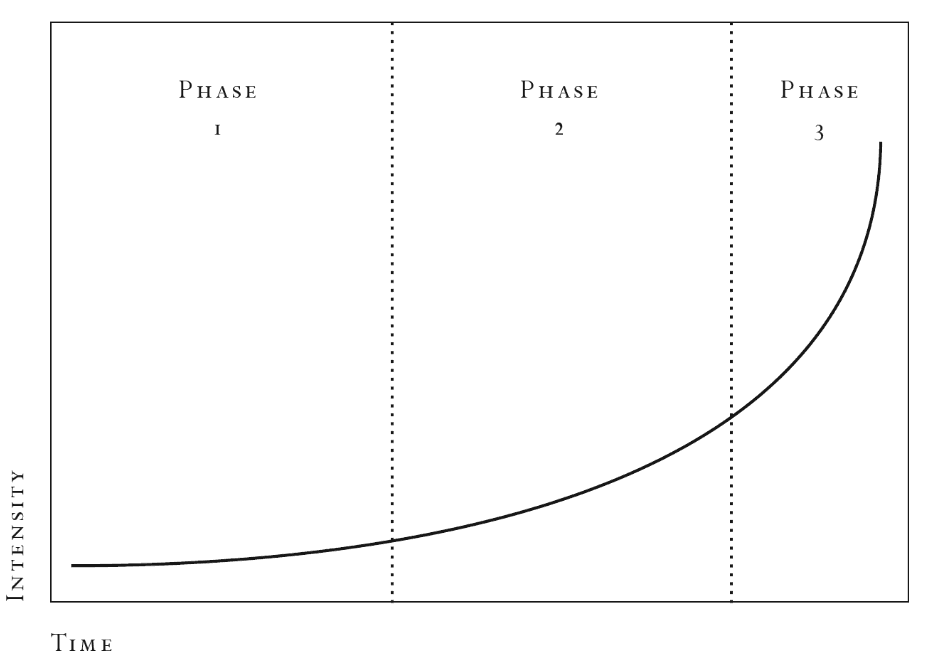Given a scientific approach to nonviolence we want to use the proportional approach to the degree of conflict we are facing. It would be wrong to reach for an extreme method like fasting too early or carry on with introductory level methods like letter writing past the point where it can be effective. Tempers flair and conflicts escalate in the degree with which parties can dehumanize one another. That escalation has been illustrated in the accompanying graphic, and as you will see, it is convenient to plot that escalation in three stages.
- In the first stage, the component can be reached by reason and negotiation; here the techniques of conflict resolution proper, especially in the advanced forms of Nonviolent Communication, is the appropriate set of tools.
- However, as Gandhi said, there are times when “ you need to reach the heart also.” Your opponent is not listening to you, this is where Satyagraha comes in and we may need to invoke what Gandhi called “the law of suffering”—taking on rather than inflicting some of the suffering that is inherent in the situation. Correctly done, this is a powerful approach and will serve to resolve practically any kind or degree of dispute.
- However, because we find ourselves late in a conflict and/or the opposition is unusually stubborn, the only way still open to reach the opposition is by undertaking the risk of our very life. This is never to be done lightly. On the one hand, Gandhi fasted unto death often with “miraculous” results and on the other we have activists like Kathy Kelly who have repeatedly gone into war zones to share the fate of the victims and awaken their oppressors. Note in this image that constructive programme can be carried on continuously.










[…] as well. He said Gandhi’s satyagraha is key to addressing this. He suggested checking out the Metta Center’s website and their escalation curve which can help people understand at what level of response is […]